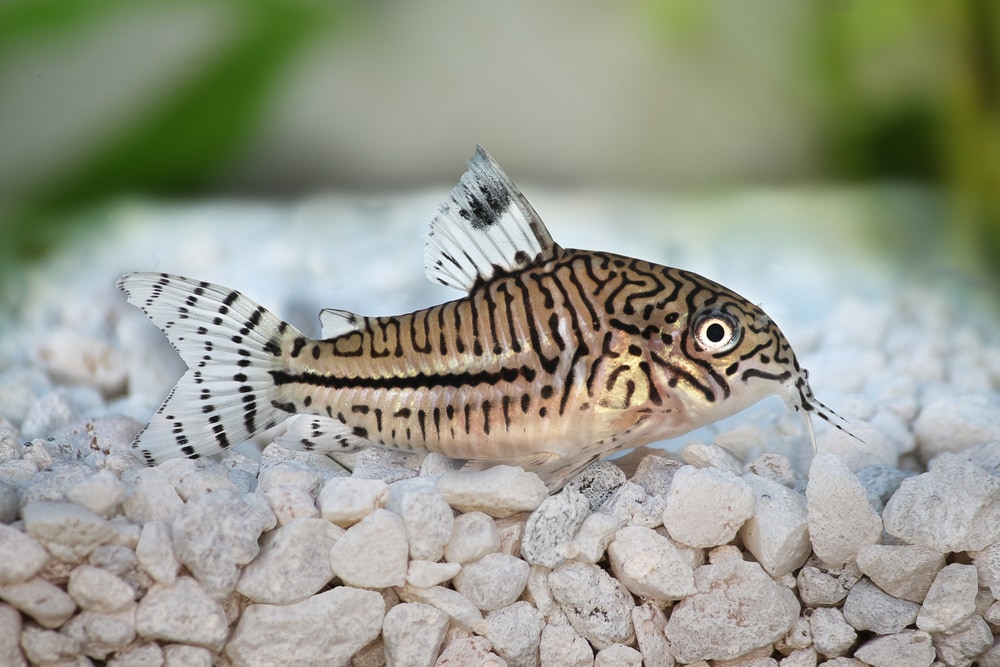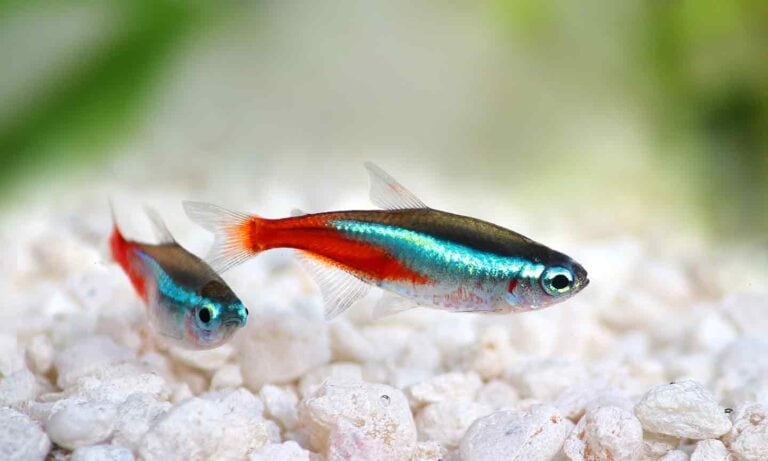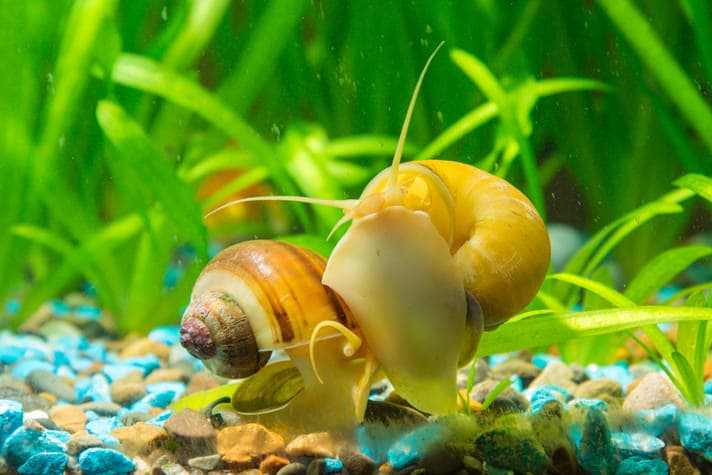Q.
I have a community aquarium that includes two albino Corydoras aeneus. The pH is neutral (7.0 to 7.2) and the temperature is 75 degrees Fahrenheit. Twice my cory catfish have laid eggs on the walls of the aquarium. My other fish had a delicious meal. Next time I would like to try to raise the cory catfish fry. I’ve had them for several years and the female is again pregnant. I’ve looked in many books, but I can’t seem to find the information I need. Should I put them in an aquarium by themselves? What care do the eggs need?
A.
I’d suggest that you move your Corydoras into a 10-gallon aquarium by themselves. It’s probably the only way you’ll be able to stop supplying caviar to the other fish in the aquarium. Your female is gravid; full of eggs, not actually pregnant.
“Conditioning” is considered the first step in successfully breeding any species. This usually means providing excellent water quality combined with a diet rich in a variety of foods. Because your female is full of eggs, you must already be providing these essentials.
Frequently, the trigger to successful Corydoras spawning is a water change with slightly cooler water. I also like to drop the water level in the aquarium down a few inches to keep the eggs in a more confined area. A mature sponge filter (one that is biologically active) and some plants (I like Java fern) should be added to the breeding aquarium.
In the evening, add your catfish to the aquarium. After the cory catfish have spawned, I remove the adults from the aquarium. There is no post-spawning care of the eggs by the adults, so there is no reason to leave them in the fish aquarium. They’re certainly capable of eating their own eggs or wrigglers.
The eggs hatch in three to five days depending on the temperature and species. The tiny wrigglers (with yolk-sac attached) can be observed on the aquarium bottom. After the sac is absorbed, microworms, baby brine shrimp and commercial fry food should be fed.
I also think the aquarium should have a tight-fitting cover. This is to help stabilize the temperature between the aquarium water and surface air, which will be important when your baby cory catfish come to the surface for their first “gulp” of air. Good luck with your new Corydoras fry!
Posted by: Chewy Editorial
Featured Image: Via Shutterstock/Mirko Rosenau
Share:









